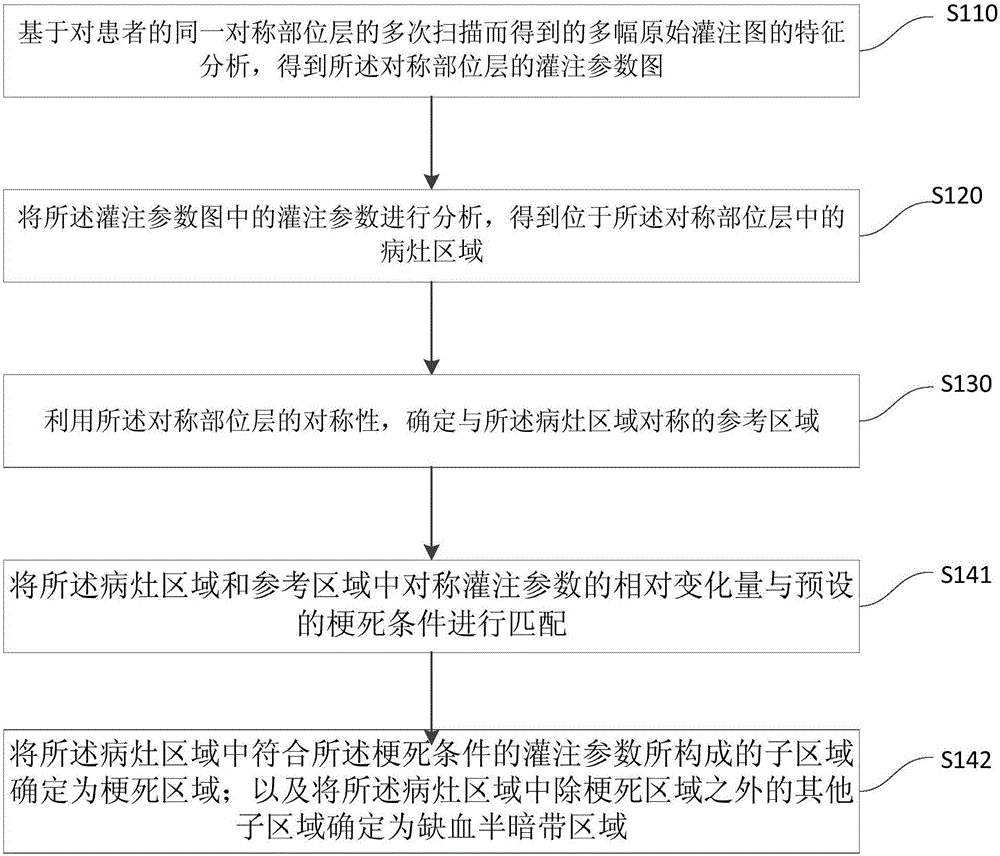Method and system for recognizing focus of infection by perfusion imaging
A perfusion imaging and lesion technology, which is applied in the field of using perfusion imaging to identify lesions, can solve problems such as low accuracy, and achieve the effect of solving inaccurate lesion identification.
- Summary
- Abstract
- Description
- Claims
- Application Information
AI Technical Summary
Problems solved by technology
Method used
Image
Examples
Embodiment 1
[0019] figure 1 It is a flow chart of the method for identifying lesions using perfusion imaging provided by Embodiment 1 of the present invention. This embodiment is applicable to the situation where the perfusion map of the patient's organ or tissue captured by the CT equipment is identified, and then the location of the lesion is determined. The method described in this embodiment may be performed by an identification system, wherein the identification system may be software and hardware installed in a computer device. The computer device may be connected to the CT scanning device, or it may be an image processing part including a processor and a memory in the CT scanning device. Among them, the CT scanning equipment scans the patient's organs or tissues layer by layer to obtain the original perfusion map of the cross-sectional layers of each organ or tissue. For example, a CT scanning device moves along a spatial axis and can scan a patient's entire organ or each cross-s...
Embodiment 2
[0058] Figure 5 It is a schematic structural diagram of a system for identifying lesions using perfusion imaging provided in Embodiment 2 of the present invention. This embodiment is applicable to the situation where the perfusion map of the patient's organ or tissue captured by the CT equipment is identified, and then the location of the lesion is determined. Wherein, the identification system may be software and hardware installed in computer equipment. The computer device may be connected to the CT scanning device, or it may be an image processing part including a processor and a memory in the CT scanning device. Among them, the CT scanning equipment scans the patient's organs or tissues layer by layer to obtain the original perfusion map of the cross-sectional layers of each organ or tissue. For example, a CT scanning device moves along a spatial axis and can scan a patient's entire organ or each cross-sectional layer of tissue. As another example, CT scanning equipmen...
PUM
 Login to View More
Login to View More Abstract
Description
Claims
Application Information
 Login to View More
Login to View More - R&D
- Intellectual Property
- Life Sciences
- Materials
- Tech Scout
- Unparalleled Data Quality
- Higher Quality Content
- 60% Fewer Hallucinations
Browse by: Latest US Patents, China's latest patents, Technical Efficacy Thesaurus, Application Domain, Technology Topic, Popular Technical Reports.
© 2025 PatSnap. All rights reserved.Legal|Privacy policy|Modern Slavery Act Transparency Statement|Sitemap|About US| Contact US: help@patsnap.com



